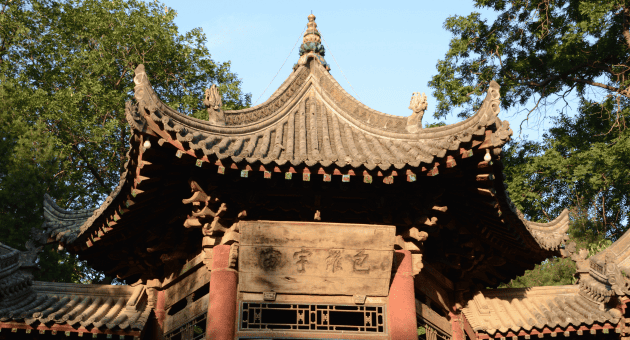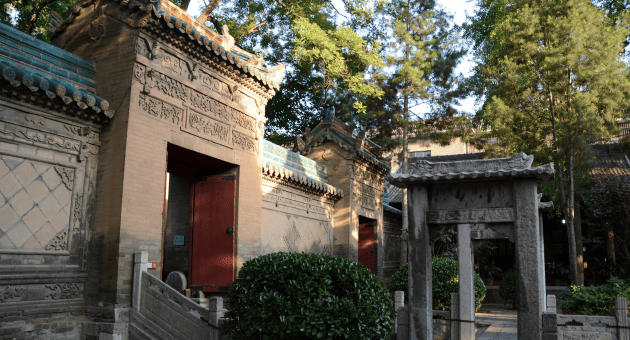The Great Mosque of Xi’an, located in the historic Huajue Lane Muslim Quarter, is a magnificent religious and cultural landmark. This mosque is one of the most significant Islamic sites in China and a testament to the country’s rich cultural heritage. In this article, we’ll explore the fascinating history, unique architectural features, and cultural significance of the Great Mosque of Xi’an.
A Brief History of the Great Mosque of Xi’an

The history of the Great Mosque of Xi’an dates back to the Tang Dynasty (618–907 AD). The mosque was built during the reign of Emperor Gaozong to serve the needs of the Muslim community in the city. However, the present-day structure has undergone numerous expansions and renovations throughout the centuries, with the most significant changes taking place during the Ming (1368-1644 AD) and Qing (1644-1912 AD) Dynasties.
The Tang Dynasty and the Mosque’s Origins
The Tang Dynasty was a significant period in China’s history when Islam first arrived in the country. During this time, a significant number of Arabian and Persian traders and travellers settled in China, spreading Islam’s teachings in the process. The Great Mosque of Xi’an was built to accommodate the growing Muslim community at the time.
Architectural Evolution Through the Dynasties
Over the centuries, the Great Mosque of Xi’an has undergone significant architectural transformations. Notably, these changes reflect the influence of different dynasties and their unique styles. For instance, the mosque’s façade is predominantly Chinese, with green and yellow tiled roofs, upturned corners, and upturned gables. On the other hand, significant interior features of the mosque, such as the prayer halls and minarets, have distinct Islamic architectural influences.
The Mosque’s Role in the Silk Road
For centuries, Xi’an was the starting point of the Silk Road, a vast trade network that connected China to the rest of the world. The Great Mosque of Xi’an played a significant role in the Silk Road trade network, providing a place of worship and rest for traders and travellers. This mosque’s location in the heart of the city made it a convenient stop for merchants, making it an essential religious and cultural centre.
Architectural Features of the Great Mosque

One of the most notable features of the Great Mosque of Xi’an is its unique blend of Chinese and Islamic architectural styles. Some of the most outstanding features include:
The Blend of Chinese and Islamic Styles
The Great Mosque seamlessly blends Chinese and Islamic architectural elements, creating a unique and impressive structure. The mosque’s entrance gate, for example, features a classic Chinese arch with Islamic-style panelled doors. Additionally, the interior decorations of the mosque, particularly the floral and calligraphic designs, show a distinct Chinese influence.
The Prayer Hall and Minaret
The mosque’s prayer hall and courtyard are impressive, with intricate decorations adorning every corner. The prayer hall is spacious, with a vast marble courtyard leading to the principal prayer hall. The minaret, located near the main entrance, is another outstanding architectural feature of the mosque. This tower stands at a height of 43 feet and has a winding staircase leading to its summit, providing breathtaking views of the city and the surrounding area.
The Courtyards and Gardens
The Great Mosque has several courtyards and gardens that are both aesthetically pleasing and functional. Visitors can take a leisurely stroll through the gardens and courtyards surrounding the mosque, admiring the stunning floral arrangements and peaceful water features.
Cultural Significance of the Great Mosque

Aside from its impressive architecture, the Great Mosque of Xi’an is also culturally significant. It serves as an important centre for Islamic learning, with a significant library and a wealth of resources for Muslim scholars and students. Additionally, the mosque’s presence has helped bridge the gap between Chinese and Islamic cultures, with both communities learning from and appreciating each other’s unique traditions.
The Mosque as a Center for Islamic Learning
The Great Mosque of Xi’an is a hub for Islamic learning, with a prominent library and an excellent collection of books that provide valuable resources for Islamic scholars and students. The mosque also houses several schools that teach Islamic principles to children and adults.
The Great Mosque’s Influence on Chinese-Muslim Culture
Over the centuries, Chinese culture has been significantly influenced by Islamic and Arab cultures, with the Great Mosque of Xi’an serving as a central hub for this exchange. The mosque has played a significant role in fostering mutual understanding and respect between religions and cultures.
The Role of the Mosque in Modern Xi’an
The Great Mosque remains a significant cultural and religious centre in modern-day Xi’an, with Muslims continuing to use the mosque for worship, education, and community events. The mosque’s presence in the city reflects Xi’an’s rich history, cultural heritage, and diverse community.
Visiting the Great Mosque of Xi’an

If you’re planning a visit to Xi’an, exploring the Great Mosque should be at the top of your itinerary. Here are some essential tips to help make your visit enjoyable and unforgettable:
How to Get There and When to Visit
The Great Mosque is located in the city’s Muslim Quarter and is easily accessible by taxi or bus. The mosque is open to visitors daily, with the best time to visit being early in the morning or late afternoon when the crowds are thinner.
Exploring the Mosque and its Surroundings
Visitors to the Great Mosque of Xi’an can expect to spend hours exploring its unique architectural features, and impressive courtyards and gardens, and learning about its rich history and cultural significance. Additionally, the mosque is surrounded by numerous traditional markets, tea houses, and restaurants, providing an excellent opportunity to experience Chinese-Muslim culture in all its diversity.
Tips for a Respectful and Enjoyable Visit
When visiting the Great Mosque, it’s essential to dress modestly and respectfully, particularly for female visitors. Additionally, visitors are advised to maintain a quiet and respectful demeanour inside the mosque and avoid taking photographs during prayer times.
Conclusion
The Great Mosque of Xi’an is a testament to China’s rich cultural heritage and the remarkable diversity of the Muslim community in the country.
This religious and cultural landmark provides a unique opportunity to explore the rich history, fascinating architecture, and cultural significance of the Great Mosque and the wider Chinese-Muslim community. A visit to the Great Mosque of Xi’an is undoubtedly a memorable and highly recommended experience.


